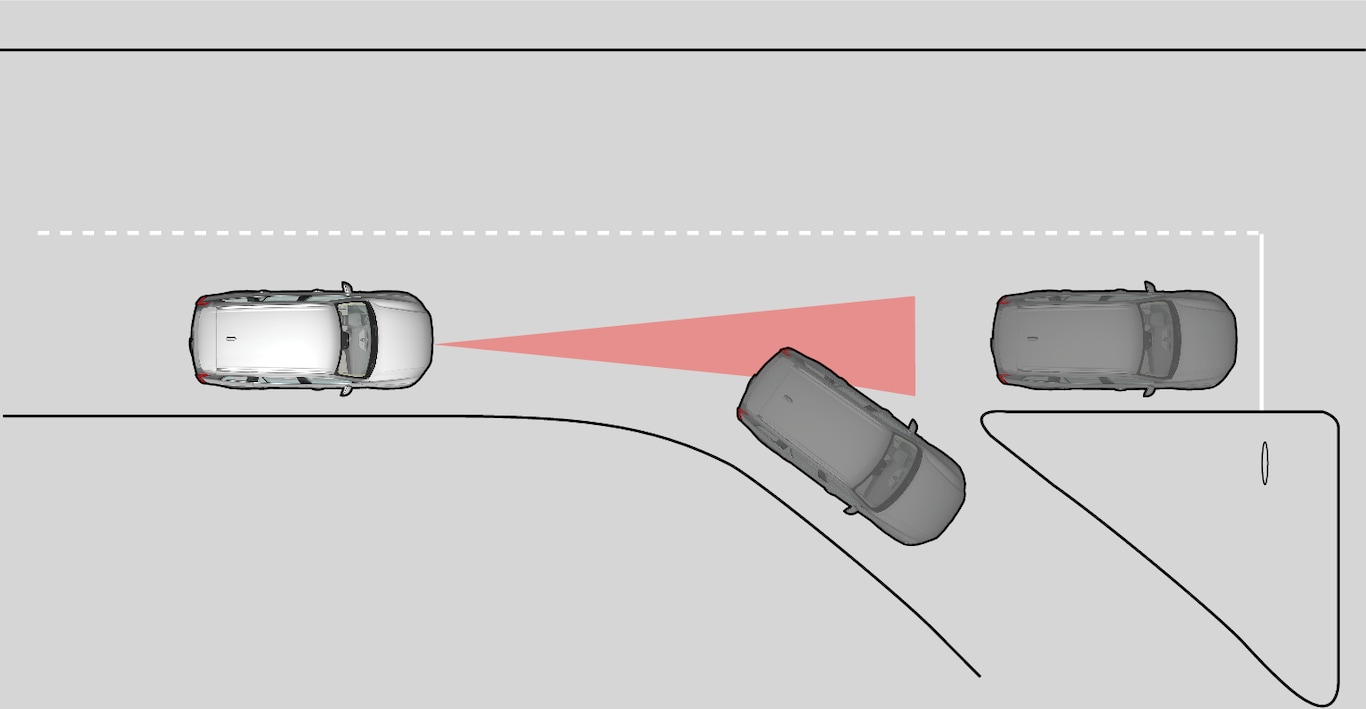Change of target

When the adaptive cruise control is following another vehicle at speeds below 30 km/h (20 mph) and changes target from a moving to a stationary vehicle, the adaptive cruise control will slow down for the stationary vehicle.
Warning
When the adaptive cruise control is following another vehicle at speeds in excess of ca 30 km/h (20 mph) and the target is changed from a moving vehicle to a stationary vehicle, the adaptive cruise control will ignore the stationary vehicle and instead select the stored speed.
- The driver must then intervene him/herself and brake.
Automatic standby mode with change of target
- when the speed is below 5 km/h (3 mph) and the adaptive cruise control is uncertain whether the target object is a stationary vehicle or some other object, e.g. a speed bump.
- when the speed is below 5 km/h (3 mph) and the vehicle in front turns off so the adaptive cruise control no longer has a vehicle to follow.
Automatic braking
For shorter stops in connection with inching in slow traffic or at traffic lights driving is automatically resumed if the stops do not exceed about 3 seconds - if it takes longer before the car in front starts moving again then the Adaptive cruise control is set in standby mode with automatic braking.
- Press the steering wheel button
 .
. - Depress the accelerator pedal.
Note
ACC can keep the car stationary for a maximum of 5 minutes. After this the parking brake is applied and adaptive cruise control is disengaged.
The parking brake must be released before the adaptive cruise control can be reactivated.
Cessation of automatic braking
In some situations, automatic braking ceases on reaching 0 km/h and Adaptive Cruise Control is set in standby mode. This means that the brakes are released and the car may start to roll - the driver must therefore intervene and brake the car himself/herself to keep it stationary.
- the driver puts his/her foot on the brake pedal
- the parking brake is applied
- the gear selector is moved to P, N, or R position
- the driver sets the adaptive cruise control in the standby mode.
Automatic activation of parking brake
In certain situations the parking brake is applied to keep the car stationary.
- the driver opens the door or takes off his/her seatbelt
- ACC has kept the car stationary for more than approx. 5 minutes
- the brakes have overheated
- the engine is switched off.